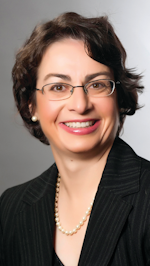Do you want to improve your patient engagement and education? Is your case acceptance rate lower than you would like? Do you have patients who say yes to treatment . . . but they need to speak with their significant others before making any treatment decisions? Do you have Spanish-speaking patients, but do not have team members who are fluent? If you answered yes to any of these questions, there are a number of options for you and your practice to provide patients with the best solutions for their oral health situations.
Patient education videos and multimedia presentations can provide patients with information to assist them in wanting what they need. As a hygienist, your patients depend on you to inform and educate them on their health and disease statuses. With dentistry moving towards a medical model of care, it is becoming more important that patients understand their situations and the treatments that their dental professionals are recommending. Numerous reports indicate this. For example, a 2017 article in the Washington Post stated, “[P]atients postpone dental care due to cost. By postponing treatment, patients can overburden emergency rooms [and] public and private programs with conditions that could have easily been treated in the dental practice.” (1) If patients understand their conditions through use of educational materials, this can lessen the burden our health-care system faces and decrease overall costs for patients and health-care providers.
For years, dental teams have relied on educational brochures or handouts to inform patients about dental treatments and conditions. More recently, social media and websites have served to educate, but they are often inadequate. Patient education videos and multimedia presentations provide a superior level of understanding for all patients. Whether chairside, in the practice reception area, or at home, and whether in English or in Spanish, multimedia presentations can cover an extensive array of treatment options to assist patients in making informed decisions. To be effective for patients, this education needs to short, easy to understand, consistent, and engaging.
Education also should be based on patients' preferred styles of learning. Patients can be visual, auditory, or kinetic learners. Some learn best by seeing, others by hearing, and others by touching and doing. As a hygienist, your role is to educate and engage patients, to assist them in getting to “yes” for treatment recommendations, and to use their preferred communication styles. Having videos and multimedia presentations in your toolkit can assist in this process.
Adult patients often enjoy seeing patients and conditions that are similar to what they are experiencing. Younger patients like to have the “wow” and “engage me” factors. Multimedia presentations can offer each group the patient education that meets its unique need.
Practices are always trying to gain an edge over their competition for their patients' disposable income, while patients want their practitioners to be technology savvy with excellent customer service skills. Google videos, Facebook, and YouTube have all gained popularity in the last few years because people enjoy learning while being entertained. Providing patients with videos and multimedia presentations provides the best of both worlds—engagement and customer service related to their specific needs.
Patients have many choices when it comes to dentistry. Initially, a patient chooses to contact your practice based on a number of factors ranging from ease of contact, to location and hours, to friends and family referrals, to social media interest. After patients have been to your practice, whether they continue on as patients or are “one-hit-wonders” is determined by tangible and intangible values. One such area is the amount of time and type of education provided to patients. In order for patients to understand their situations and move forward with treatments, they must be truly educated about their unique needs—the “what’s in it for me” phenomenon. If patients do not understand the implications of treatment or nontreatment, they will often opt for nontreatment, since it doesn’t affect them significantly (unless they are in obvious pain). Patient education information provides a platform for that understanding. There are many forms of patient education, ranging from brochures or in-office handouts to robust patient education solutions. These all provide dental teams with the ability to educate patients in the office or to follow-up at a more patient-friendly time.
A University of Minnesota study a number of years ago found that there was a greater retention rate of information at 30 days postlearning if multimedia tools were used rather than students not being engaged by multimedia. (2) Today’s patients are accustomed to learning from short videos that can be accessible anywhere and at any time. Better and more complete information allows for greater patient case acceptance. Many dental practice consultants believe that the greater the amount of time that is spent with patients providing education, the better the practice’s case acceptance rate and overall higher patient satisfaction.
Yet, the dental practice of today is hectic. Whether it's the business team members juggling multiple priorities or the clinical team seeing patients, there is never enough time to adequately prepare and present information to patients on a consistent basis. A business team member may explain a process, procedure, or situation to a patient one way, while a clinical team member may use a different tone and messaging to the patient. This inconsistency leads to confusion for the patient and thus either a choice of nontreatment or a false acceptance of treatment. False acceptance occurs when a patient initially says yes to treatment, but then the day prior to or the day of treatment will either cancel or fail to appear for no substantial reason. To help reduce this false acceptance, the practice can have an education solution that provides the opportunity to educate the patient while the patient is in-office—so the appropriate dental team member can address any questions or concerns. Additionally, it may also be beneficial to have the ability to email information to patients or have educational materials on the practice’s website for further follow-up. New patients can learn about procedures or specialties that the practice offers or research their own situations. They will appreciate having the information available to them. Established patients may want to review information presented during treatment or learn about new techniques that your practice provides. Patients undergoing complex procedures often don’t remember all of the postoperative instructions, and having this information available to them provides a level of comfort and support that can enhance their experiences.
Many practices offer patients refreshments or television programming while either waiting in the patient reception area or during treatment. Often these television programs promote products or services that vie for the patients’ disposable income. As a patients waiting to be seen in the dental office who are watching programs that advertise new cars, vacations, or technology, why would patients want to spend their money on their teeth when they could be enjoying what the ads are offering? It is only human nature to want the latest gadget or experience new opportunities. Having entertainment for patients is important, but using the time patients spend in the office effectively improves patient satisfaction and case acceptance. Having educational materials that engage patients of all ages running in the reception area or in the operatories promotes patients to ask questions. A question is a request for more information, and this can open the door to educate the patient on what she or he values.
Dental teams are always looking for ways to market their practices beyond their current patient bases. Working in conjunction with local businesses, practices can utilize patient education information to foster a win-win sense of cooperation for each business and for patients. Patient education technology should provide descriptions of procedures and oral health conditions in a variety of ways—in addition to the actual videos or multimedia. When investigating technology options for patient education, does the technology offer readily available, customizable resources that can be used in a variety of settings such as health and wellness fairs or other community events? Can the technology provide time specific information for patients such as end-of-year promotions? Does the technology explain dental procedures and terminology in an easily understandable and nonthreatening manner?
Patients often question and research their conditions and available treatments from a variety of sources. Some sources are reputable and reliable, others not. They expect to be part of the decision-making process when it comes to their oral health-care needs. Arming patients with information that is reliable and consistent provides a level of trust that can greatly enhance the case acceptance and satisfaction level. When given information from a disinterested third party (the computer), patient biases are removed and learning is often enhanced. Patients can be taken from a stage of incompetency and unawareness to a level of competency and knowledge that develops trust in hygienists and their practices.
Hygienists and other team members who utilize patient education technology often cite the benefits. These include an increase in general patient education regarding all dental topics, a complete and consistent message concerning treatments offered or conditions seen, and an increase in treatment plan acceptance by providing excellent customer service. Having the education available in patient friendly terms and learning styles gives patients the ability to understand their unique situations while freeing up valuable time for team members. How does your practice handle patient education? What is your practice’s specific protocol for who, when, where, and how patient education should occur? Why is patient education important to you as a hygienist and to your practice? The answers to these and other questions will assist you and your practice in improving overall patient case acceptance, productivity, and profitability while educating patients on the importance of maintaining their oral health. Armed with the knowledge that patient educational videos and multimedia presentations can benefit your practice and patients, how will you implement this information to enhance the practice and patients you treat?
References
1. Neumann J. A dental visit can cost you, but a delay can hurt your teeth and budget even more. Washington Post website. https://www.washingtonpost.com/national/health-science/a-dental-visit-can-cost-you-but-a-delay-can-hurt-your-teeth-and-budget-even-more/2017/12/01/20bef8e8-c405-11e7-aae0-cb18a8c29c65_story.html?noredirect=on&utm_term=.63a1b83f1e54. Published December 2, 2017.
2. Lawson K. The Trainers Handbook. Hoboken, NJ: Wiley; 2016 (182).
Ann Marie DePalma, MEd, RDH, CDA, FADIA, FAADH, is a technology advisor for Patterson Dental, a writer for RDH magazine, and an author in dental hygiene textbooks. She is the 2017 MCPHS Esther Wilkins Distinguished Alumni Recipient. She is a Fellow of the ADIA and AADH, a continuous member of ADHA, and an active member of the Massachusetts Dental Hygiene Association.








